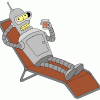That's awesome Keynes! How are the results holding up at present?My aforementioned positive effects seem to be long lasting btw. Better than I could've hoped for!
Edit: it's 48* LED, not 46 of course!
Cool Nattzor. Def looking forward to some quantification. Sorry if you've already mentioned this...are you using cambridgebrainsciences to measure results?After about two weeks of not using LLLT in any blinded experimental purpose, I'm gonna do a session tonight and continue the experiment. Will try to be done in 2 months and then publish the results.
Edited by lostfalco, 06 November 2013 - 04:09 AM.





















































